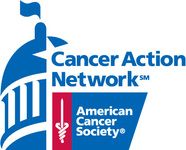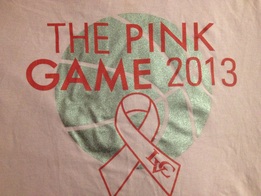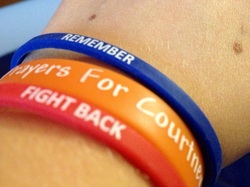 35,400 minutes. 590 hours. That’s right, there are only 24 days until this year’s Relay for Life at Lebanon Valley College. In less than a month, hundreds of members of the LVC community will pack into the Arnold Sports Center for the 12th annual Relay for Life “Wish Upon a Cure.” It’s crunch time! Relay for Life is an organized, community fundraising walk that incorporates different teams of people that “relay” for hours (3 p.m. to 3 a.m. at LVC). Participants give up their own sleep to demonstrate that cancer never sleeps and therefore neither should we. The best part about Relay for Life is that participants do not come empty handed. After all, in addition to being a family-friendly, community oriented, time for remembering and celebrating—Relay is most importantly a fundraising event to fight back against the one thing that brings all of the “relayers” together—cancer. LVC Relay for Life has set its fundraising goal at $43,500. While each participant in Relay for Life pays a $10 registration fee, it takes a lot more than just $10 a person to meet a goal of $43,500. The answer? Fund-raise! (It’s actually not that hard.) Here are some tips for fundraising that are quick, easy, and effective: (They worked for me; I’m already close to $900.00) - Ask businesses if you can set up a donation can
- Use your Christmas card list—mail out a letter asking for donations to each person
- Go door to door
- Ask your teachers, co-workers, friends, and family
- Homemade cookbooks bearing your team name
- Homemade crafts
- Baked goods
- In Honor, In Memory, and In Support of Sun and Moon Donation Cards (see your team development chair or staff partner)
- Services (yard work, house cleaning, babysitting, etc.)
- Activities (bowling, skate parties, trivia nights, etc.)
Profits raised at Relay for Life go to the American Cancer Society to help fund programs such as Hope Lodge, Road to Recovery, Look Good…Feel Better, Reach to Recovery, and provide college scholarships. Every dollar counts and makes a difference. So ask! (the worst they can say is “no."
 The word awesome seems to lose its definition in today’s world. Think about it; when there’s no line at your favorite restaurant your initial reaction is, “Awesome!” Or when the sport team you have watched suffer through agonizing losses for countless years finally brings home a trophy, it’s, “Awesome!” But when was the last time you were truly in awe about something?
I recently volunteered at the CCRF (Children’s Cancer Recovery Foundation) in Harrisburg, PA. I had been looking into the many different cancer oriented non-profit organizations in Pennsylvania and was ecstatic to find an organization so close to LVC, just a few miles on I81 to be exact.
The Foundation is currently established in the United States, Canada, the United Kingdom and Germany and is also the largest supplier of gifts to children with cancer in North America through the Bear-Able Gift Program. However, the organization does not stop with just toy drives, they also have the Helping Hands Fund to provide families with emergency payments to help them keep up with bills and travel expenses. To top it off, the organization also began the Camp Scholarship Program which allows children in remission to basically learn to be kids again by allowing them to attend a camp of their choice.
I spent the first hour of my visit talking with Doug Runkle, Vice President and Chief Operating Officer for the foundation, about where exactly the organization came from; a story that changed my life. Mr. Runkle engaged me in a conversation about Greg Anderson, who was diagnosed with stage IV lung cancer in 1984. After meeting with his surgeon Greg Anderson was given a “terminal” diagnosis—only 30 days to live. His story reminded me of Tim McGraw’s “Live Like You Were Dying” song. But really—what do you do when you get that kind of news?
The mission of the Cancer Recovery Foundation is to use a system known as “integrated cancer care” to help people prevent and survive cancer. It is a technique formed through interviews with over 16,000 cancer survivors who shared their strategies for fighting back against the disease without relying solely on medical treatment. These strategies created an international cancer recovery movement, a movement led today by Greg Anderson. Yes, the man that was supposed to die in 1984 is still alive today (and active), 29 years after receiving his “death sentence.”—Awesome! Greg Anderson is the author of eleven books that have been translated into 31 languages. His work includes international Best Sellers The Cancer Conqueror; Cancer: 50 Essential Things to Do; and The 22 (Non-Negotiable) Laws of Wellness.
Years after his diagnosis, Greg Anderson was asked to speak at a convention to parents of children with cancer about how to cope with the pain. Upon arriving at the venue however, he realized he had no idea what to say to the parents. Greg Anderson, a father himself, could not imagine the pain they were going through even though he had just dealt with his own life threatening illness. That’s when he decided to create The Children’s Cancer Recovery Foundation, that’s where it got its start.
Many of the most important decisions about cancer are made outside of your doctor’s office. Instead, they are made by your state legislature, in Congress and in the White House. ACS CAN empowers regular people to be part of the growing national movement that is fighting back against cancer. ~American Cancer Society Cancer Action Network
 Politics has never been my thing. The sight of angry men debating over the issues plaguing our country makes me cringe instantly. Not to mention when someone instigates a raging conversation with my blatantly conservative father. That being said, I was surprised to find out that cancer was one of the topics addressed in President Barack Obama’s State of the Union address—maybe I should start paying more attention to politics. Everyone knows that cancer is a medical issue; that it takes doctors, scientists, researchers, and hospitals to fight back against the disease. I think it’s also safe to say that cancer is very much a social issue. Whether we are family, friends, neighbors, co-workers, or even acquaintances with someone, when cancer comes into the picture it affects an entire community. A community that organizes events to promote awareness, raise money, and increase support. But, is cancer really a political issue that should be addressed by our president? The American Cancer Society answers, “Yes.” After all, politics are what organize and govern the country that we live in. They decide what rules citizens and organizations must follow and how much money they get to spend. Yes, cancer is very much a political issue and no matter what party you choose to associate with, funding for biomedical research is important. Funding, however, is not the only issue politics addresses on the topic of cancer. It plays a much larger role. Politics decides the age that someone can purchase cigarettes and also who can use a tanning bed in the United States. It also decides what the tax will be on each of these activities which have been proven to cause cancer. By increasing the tax more Americans will stop participating in habits harmful to their bodies (let’s face it, Americans are cheap). By setting these rules the government helps save lives. Currently, the main driving force behind the political side of cancer is ACS CAN (American Cancer Society Cancer Action Network). LVC joins this force by having an Advocacy Committee as part of CAC. The Advocacy Committee writes letters to local legislators and attends lobbying events to make it known to our politicians that cancer is a priority and needs attention. This year LVC sent letters to every member of the House and Senate during Breast Cancer Awareness Month to ask for increased funding for cancer research. Volunteers of ACS CAN have: - Led to 35 states as well as Washington, DC and Puerto Rico to go smoke-free
- Supported a 62-cent increase in the federal cigarette tax, preventing 1.9 million children from becoming lifelong tobacco users
- Helped secure U.S. Food and Drug Administration regulation of tobacco products
- Increased federal cancer research funding for the National Institutes of Health
Politicians are our voice. If we say we want more funding for cancer research—that's what we'll get. But we have to speak up, because together we CAN find a cure for cancer.
Talia Joy Castellano is an exceptional 12-year-old girl, with articulateness, wit and serious makeup skills beyond her years.~ The Huffington Post
As I was scrolling through my Facebook newsfeed I came across a post from the Ellen DeGeneres Show which featured this video and I was reminded of something I was told while volunteering at the Children’s Cancer Recovery Foundation in Harrisburg, PA—sometimes it takes something other than medicine to defeat cancer, like staying positive. Ellen DeGeneres, a daytime talk show host and also spokeswoman for the “easy, breezy, beautiful” CoverGirl makeup line is helping to do just that with Talia Joy Castellano, who is currently fighting cancer.
Talia Joy Castellano, is a 12 year old girl currently suffering from two different types of cancer—neuroblastoma and preleukemia. Her chemotherapy treatments which she has been receiving since 2007 have left her bald, a horrendous blow to any seventh grade girl. However, Talia uses her exceptional makeup skills to help her remain confident and enthusiastic through her fight with cancer. She even produces YouTube makeup tutorials that describe different types of makeup and application techniques she recommends for girls to try.
I began watching her videos on YouTube the other day, not for makeup advice but because I find them truly inspiring. Throughout all of her videos she remains a joyful, hopeful, even comical 12 year old girl that never lets her smile disappear. Perhaps that’s why Ellen was so drawn to her. Watch any of her videos and you won’t be surprised to find out that Talia is an aspiring CoverGirl, and with the help of Ellen DeGeneres her dream came true.
This really got me thinking. What if there is more we can do to fight back against cancer than just raising money for medical treatments? What if a hospital isn’t necessarily the only place for hopes of a full recovery? Yes, I know we don’t all have our own TV show that brings in millions of dollars that we can give out to just anyone to help make their dreams come true, but what if we start with the people we know, the people we love? We all know someone who is battling cancer; how can we help them stay positive and help their dreams come true? Wouldn’t it be awesome if simply making their day or helping them reach a goal would push back cancer just as much as a medical treatment? I’d say it’s worth a shot!
 I always hated the color pink. My parents overwhelmed my wardrobe with shades of fuchsia, magenta, and coral— pink—and once I was old enough to recognize it, I decided I’d never wear it again. It didn’t matter how cute or cool the outfit was. I wasn’t wearing it if it was pink.
Now, pink has an entirely different meaning, and no, I’m not talking about the Victoria’s Secret clothing line. I remember during my sophomore year of high school I was given a pink ribbon to wear on my marching band uniform to support a classmate’s mom who had recently been diagnosed with breast cancer. That ribbon remains on my duffle bag today.
Pink is probably the first color that I ever associated with cancer (another reason to hate it). After all, breast cancer is the number one cancer faced by women in the United States with the exception of skin cancer. An estimated 227,000 American women were diagnosed with breast cancer in 2012 alone—one of them my close friend’s mom.
As I stood with other members of LVC’s Colleges Against Cancer organization in the Arnold Sports Complex last night I couldn’t help but smile. I stood amazed at the top of the stadium as I looked at the crowd of people normally sporting blue and white covered in shades of pink from head to toe. Women and men, children and adults, professors and other athletes gathered at the women’s basketball game to participate in LVC’s 6th annual Pink Game, which raises money and awareness for breast cancer. I stood because I couldn’t find an empty seat.
Cancer changes everything; even your favorite color. I’ll admit that I was also covered from head to toe in pink last night. From my shoes to my shirt designed specifically for the game, pink was the only way to describe my outfit and I was ecstatic.
There’s just something about being a part of an event like the Pink Game that can’t be explained. Being surrounded by people all there willing to help and donate any money they can is overwhelming. We were constantly thanked by attendants for our help in hosting the event but all we could reply was “No, thank you for coming.” While we put the event together it would have been nothing without participation from the students, staff, and community.
The funds and awareness raised by LVC’s Pink Game will not go unnoticed. Actually I’m happy to announce that yesterday, the same day that I saw our sports arena packed full of a community fighting back against cancer, my friend’s mom received her last breast cancer radiation treatment. We will make a difference by raising awareness—it takes time, effort, love, support, and a little color—Pink.
 On December 2, 2012 (exactly two months ago) I lost a high school classmate to cancer—leukemia to be exact. I remember precisely how I heard the news. It was a Sunday morning. I had managed to wake up, find my glasses that I had tossed off the night before, and was beginning to do my morning scan of the news (Facebook news that is). As I sat on my bed, still in sweats and hair a mess, I felt a knot in my stomach and my heart begin to race. Post after post revealed that something went wrong—something wasn’t right. “Prayers for Courtney” and “Stay strong” repeated over and over on my newsfeed as more old classmates heard the same news I was reading and tried to express their concern, support, and hope to our friend Courtney. A text message confirmed my biggest fear; the fight was over.
Courtney was diagnosed with AML, a cancer of the blood and bone marrow, on December 24, 2010, our senior year of high school. Following her diagnosis, she underwent four rounds of chemotherapy over the span of six months. During that time our community came together and decided not to let her face the fight alone.
Along with a group of about twenty other students of Waynesboro Area Senior High School, I helped to plan and host our first ever miniTHON, a fundraising event based off of Penn State’s THON which raises millions of dollars for pediatric cancer every year. The Art Club designed and sold t-shirts and bracelets to help raise funds and awareness of leukemia. This was the closest I can remember ever seeing our student body, and it was great.
BORO miniTHON was the second major fundraising event I had ever taken part in and probably the most influential in my desire to pursue a career in the non-profit world. While I was not close friends with Courtney during high school, it was a small school of 1,200 students and I knew exactly who she was and I learned so much more about her throughout her fight with cancer. Courtney truly was an inspiration to me. I followed her journey via Facebook and newspaper articles and could never get over the fact that every status she made or picture she posted was 100% positive. Still today, looking back, I remember her smile more than anything.
Perhaps my fondest memory of Courtney’s journey occurred on the night of our high school graduation. During our commencement we were told that in order to give every student their moment of recognition, applause was to be held until the end of the ceremony, and for the most part that happened. That is, until Courtney’s name was called. As she walked on to the stage I saw one of the most amazing moments of my life take place. The entire crowd of relatives, friends, administrators, teachers, and faculty were on their feet and the applause boomed throughout the gymnasium. It was recognition deserved by a hero—our hero.
Now, two months since Courtney’s battle ended I find it most important to look back and remember. Remember the closeness our community felt working together to help another. Remember the strength she had that allowed her to keep a smile on her face no matter what cancer threw at her. Remember the admiration felt in witnessing an everyday hero. Remember how lucky I was to know Courtney Sprenkle.
|





 RSS Feed
RSS Feed